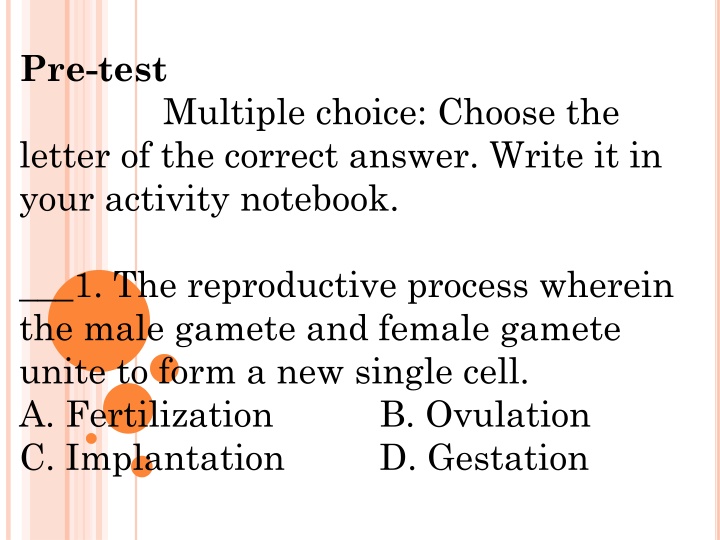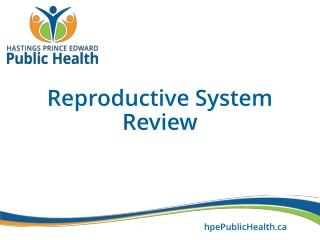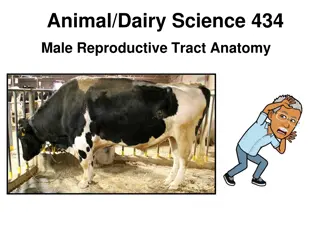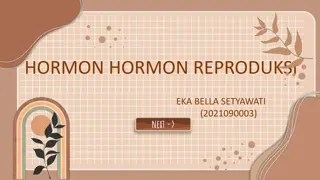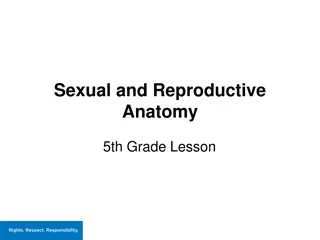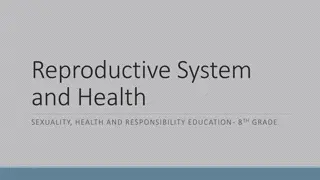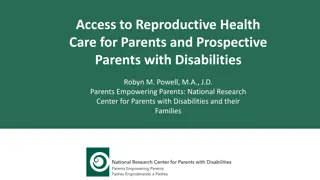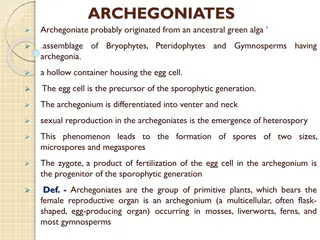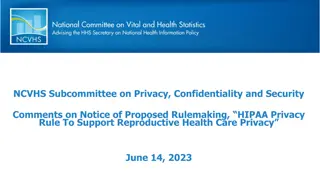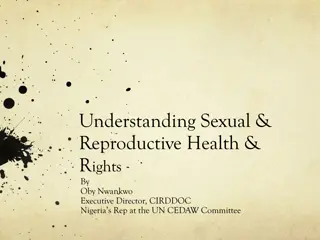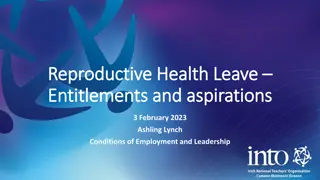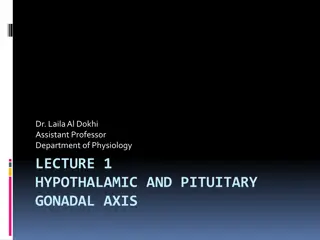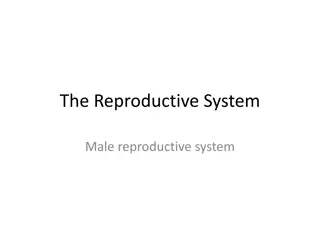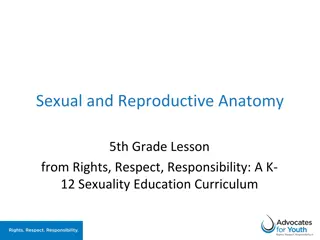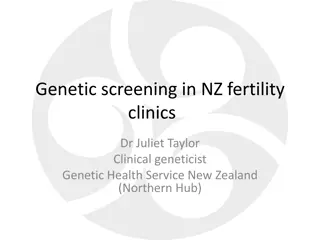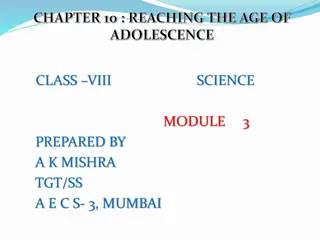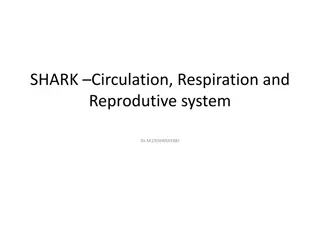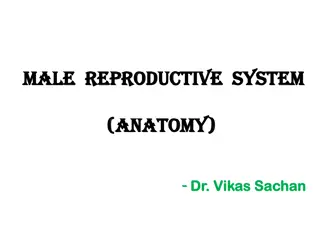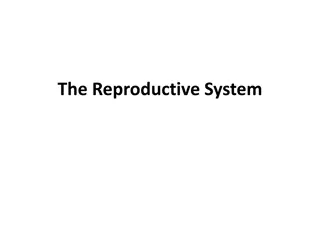Reproductive Processes
Stages of pregnancy, from fertilization to birth, the development of the fetus, feeding during pregnancy, ideal infant feeding methods, lactation, and more. Teenage pregnancy implications are also discussed.
Download Presentation

Please find below an Image/Link to download the presentation.
The content on the website is provided AS IS for your information and personal use only. It may not be sold, licensed, or shared on other websites without obtaining consent from the author.If you encounter any issues during the download, it is possible that the publisher has removed the file from their server.
You are allowed to download the files provided on this website for personal or commercial use, subject to the condition that they are used lawfully. All files are the property of their respective owners.
The content on the website is provided AS IS for your information and personal use only. It may not be sold, licensed, or shared on other websites without obtaining consent from the author.
E N D
Presentation Transcript
Pre-test letter of the correct answer. Write it in your activity notebook. Multiple choice: Choose the ___1. The reproductive process wherein the male gamete and female gamete unite to form a new single cell. A. Fertilization C. Implantation B. Ovulation D. Gestation
___2. The fertilized egg develops into a baby in the _______. A. Ovaries C. Uterus ___3. The developing human is called ______?. A. Fetus C. Baby B. Fallopian tube D. Stomach B. Zygote D. Embryo
___4. The developing human is fed in the woman s womb through. A.Mammary gland B. Placenta C. Uterus ___5. The place of pregnancy that starts from week 13 to 27. A.First trimester B.Second Trimester D. Second and third D. Bladder C. Third Trimester trimester
___6. The phase of pregnancy that lasts from week to birth a.First trimester b.Second Trimester ___7. The process of birth wherein the doctor removes the baby from the womb. A.Ceasarian section B.Normal delivery D. Painless Delivery C. Third Trimes D. Second and third trimester C. Surgical operation
___8. The behavioural development of a healthy baby wherein he/she learns to vocalize and controls movement of the head. A.0-1 month months C. 6-7 months months B. 4-5 D. 2-3
___9. THEBESTANDIDEALFORMOFINFANT FEEDINGISTHROUGH _______. A. BREASTFEEDING B. BOTTLEFEEDING C. MIXFEEDING D. ALLOF THEABOVE
___10. Lactation is the period of milk production initiated by what hormone in the mammary gland? A. Progesterone Estrogen C. Prolactin D. None of the B. above
TEENAGE PREGNANCY (MCCOY AND WIBBELSMAN, 1992: 235- 236) ANUNPLANNEDANDUNWANTED PREGNANCYCANCAUSE EMOTIONALANGUISH, POSSIBLE HEALTHRISKS, ANDINSOME CASES, LIMITEDLIFEOPTIONS.
Consider this statistics: 1. Teens 15 and younger, face a 60% higher risk of death during pregnancy and child birth than young mothers on the age of 20. 2.Babies born to young teenage mothers are two to three times more likely to die during their first year than babies born to older mothers.
3.Teen mothers are twice more likely to have low birth weight infants (at risk for physical and mental defects as well as increased risk of
4.Seventy percent of teen mothers get no medical care at all during critical first months of pregnancy and 25% get no prenatal care at all. This is specifically dangerous because, while a teen may be able to conceive a baby, her body may not be quite ready for the stresses of pregnancy and child birth.
5.EVENWITHGOOD PRENATALCARE, TEENAGERMOTHERSARE MORELIKELYTOHAVE PREMATURELABORAND TODELIVERLOWBIRTH- WEIGHTBABIES.
6. YOUNGTEENMOTHERS ARELIKELYTODROPOUTOF SCHOOLANDFACEHIGH RISKOFUNEMPLOYMENT, POVERTY, ANDDEPENDENCE ONPARENTS.
7.IFTHEYMARRYDUE TOPREGNANCY, THEIR RISKOFBREAKUPOR SEPARATIONISHIGH.
8.THEYOUNGMOTHERIS MORELIKELYTOBE ANGEREDAND DISILLUSIONEDBYHER BABY SDEMANDSAND MAYBECOMEANABUSIVE PARENT.
Activity 28: Look at the pictures and spot their differences. Be guided by the questions below. <picture 1: skinny pregnant woman> <picture 2: healthy pregnant woman>
Hand pain, numbness, or weakness (carpal tunnel syndrome) First trimester Fatigue Breast tenderness Increased urination Fullness mild aching in your lower abdomen Nausea with or without vomiting, also known as sickness Second trimester Breast changes Third trimester Braxton Hicks which contractions that do not thin and open the cervix (do not lead to labor) Fatigue Back pain Pelvic ache and hip pain Hemorrhoids and constipation Heartburn Breathing difficulty, expanding uterus is just below the rib cage, leaving lungs less room to expand. Mild swelling of the feet and ankles (edema). causes more fluid to build up in your body. This, plus the extra pressure that uterus places on the legs, can lead to the swelling of your feet and ankles. Difficulty sleeping and finding a comfortable position. Lying on your back with blood circulation, and lying on the stomach isn't possible. Sleep on your side, using pillows to support your belly and between your knees. Later in your pregnancy, it is best to lie on your left side. When you lie on your right side or on your back, the increasing weight of your uterus can partly block the large blood vessel in front of your backbone Descriptions characterizing condition contractions, "warm-up" are Leg cramps Back pain Pelvic ache and hip pain Stretch marks and other skin changes Hemorrhoids constipation Heartburn symptom of gastroesophageal reflux disease, or Nosebleeds bleeding gums Hand numbness, weakness tunnel syndrome) Braxton contractions, which are "warm-up" contractions that do not thin and open the cervix (do not lead to labor) or and the (also a morning and Pregnancy pain, (carpal or Hicks interferes
Phases of pregnancy 1. The first trimester of pregnancy lasts from week 1 through week 12. Your first sign of pregnancy may be a missed menstrual period.
The second trimester of pregnancy (from week 13 to week 27) is the time when most women start to look pregnant and may begin to wear maternity clothes. By 16 weeks, the top of your uterus,called the fundus, will be about halfway between your pubic bone and your navel. By 27 weeks, the fundus will be about 2 in. (5 cm) or more above your navel.
2. You may find that the second trimester is the pregnancy. For some women, the breast tenderness, morning sickness, and fatigue of the first trimester ease up or disappear during trimester, while the physical discomforts of late pregnancy have yet to start. Pressure on your bladder may be less as the uterus grows up out of the pelvis. easiest part of the second
3.The third trimester lasts from week 28 to the birth. Many women have some discomfort during this time as their belly gets bigger. Sleep problems are common during this period.
BIRTH The passage of a baby from its mother s uterus to the outside of her body is called birth. During birth, the uterus contracts many times and pushes the baby through the vagina and outside the mother s body
Laboris the process that lasts from the time contractions starts until the delivery of the child and the placenta. Labor lasts a different amount of time for every woman and every pregnancy.
There are three distinct stages of labor: 1st Stage Begins with the first contraction and last until the cervix has opened enough to allow the baby to pass through. Contraction happens every few minutes and lasts a minute.
2nd Stage Starts when the cervix is completely epen and lasts until the baby is delivered. During this period, contraction happens every 2- 3 minutes. After the baby is born, the doctor cuts the umbilical cord. Healthy babies breathe and cry almost immediately.
3rd Stage This is the final stage of labor. It is when the placenta is delivered. In this stage, the mother s uterine contractions push the placenta or afterbirths out of her body. At this time, the birth is completed.
REPUBLIC ACT NO. 9288 AN ACT PROMULGATING A COMPREHENSIVE POLICY AND A NATIONAL SYSTEM FOR ENSURING NEWBORN SCREENING Newborn means a child from the time of complete delivery to 30 days old. Newborn screening Newborn Screening (NBS) is a simple procedure to find out if the baby has a congenital metabolic disorder that may lead to mental retardation or even death if left untreated.
Importance of newborn screening Most babies with metabolic disorders look "normal" at birth. By doing NBS, metabolic disorders may be detected even before clinical signs and symptoms are present. And as a result of this, treatment can be given early to prevent consequences of untreated conditions. When is screening done? Newborn screening is ideally done on the 48th - 72nd hour of life. However, it may also be done after 24 hours from birth.
How is newborn screening done? A few drops of blood are taken from the baby's heel, blotted on a special absorbent filter card and then sent to Newborn Screening Center (NSC). Who will collect the sample for newborn screening The blood sample for NBS may be collected by any of the following: physician, nurse, medical technologist, or trained midwife.
What are the disorders tested for newborn screening? The disorders tested for newborn screening are: (1) Congenital Hypothyroidism (CH) (2) Congenital Adrenal Hyperplasia (CAH) (3) Galactosemia (GAL) (4) Phenylketonuria (PKU) (5) Glucose-6-Phosphate-Dehydrogenase Deficiency (G6PD Def.)
The behavioural development of a healthy baby: 1.month suckles and smiles 2-3 months vocalizes and controls head 4-5 months controls hand and rolls over 6-7 months sits briefly and crawls 8-9 months grasps and pulls up 10 11 months walks with support and stands alone
Activity 35: Window Consider the following questions and answer them in your health notebook. Window 1 : What can you say about breastfeeding? Where did you learn the word breastfeeding ? Window 2: How about bottle feeding? What benefits can you get from it? Window 3: Which breastfeeding or bottle feeding ? Why? Window 4: If you were a mom, which feeding would you choose? is more important,
Project: Newspaper Collage Cut pieces of old newspaper and form it into a food pyramid for pregnant woman and paste it in a clean sheet of paper. Present it to the class. To be pass on Friday Sept. 06, 2013
Activity 49: Pregnant Womans Meal Plan Prepare a one week meal plan for a pregnant woman. Justify your answer. Copy the following table in your notebook and fill it out with entries called for. Monday Tuesday Wednesday Thursday Friday Saturday Sunday Breakfast Snack Lunch Snack Dinner
Activity 41: ALISAS DILEMMA Read the situation carefully. Reflect on the focus questions. Copy and write answers to the questions in your activity notebook.
Alisa is a 14 year-old girl who grew up in the province. When she was in grade eight, her aunt took her to Pasay to be a househelper in the morning and to study at night in the nearby public school. While studying, she fell in love with one of her classmates who is older than her.
